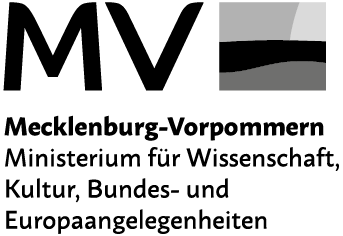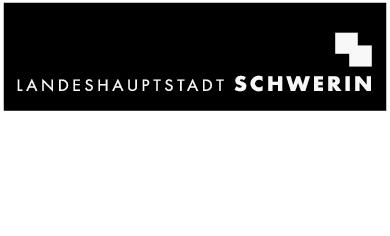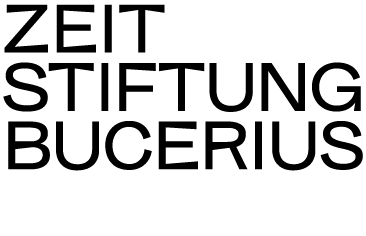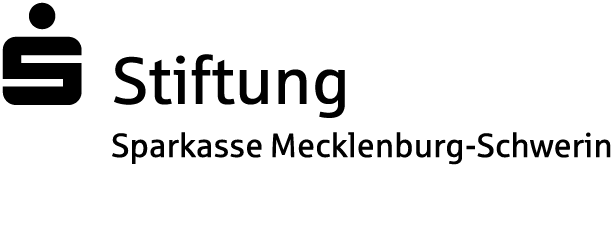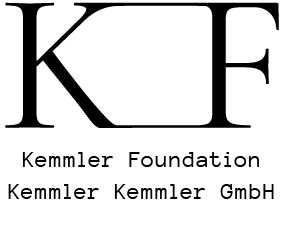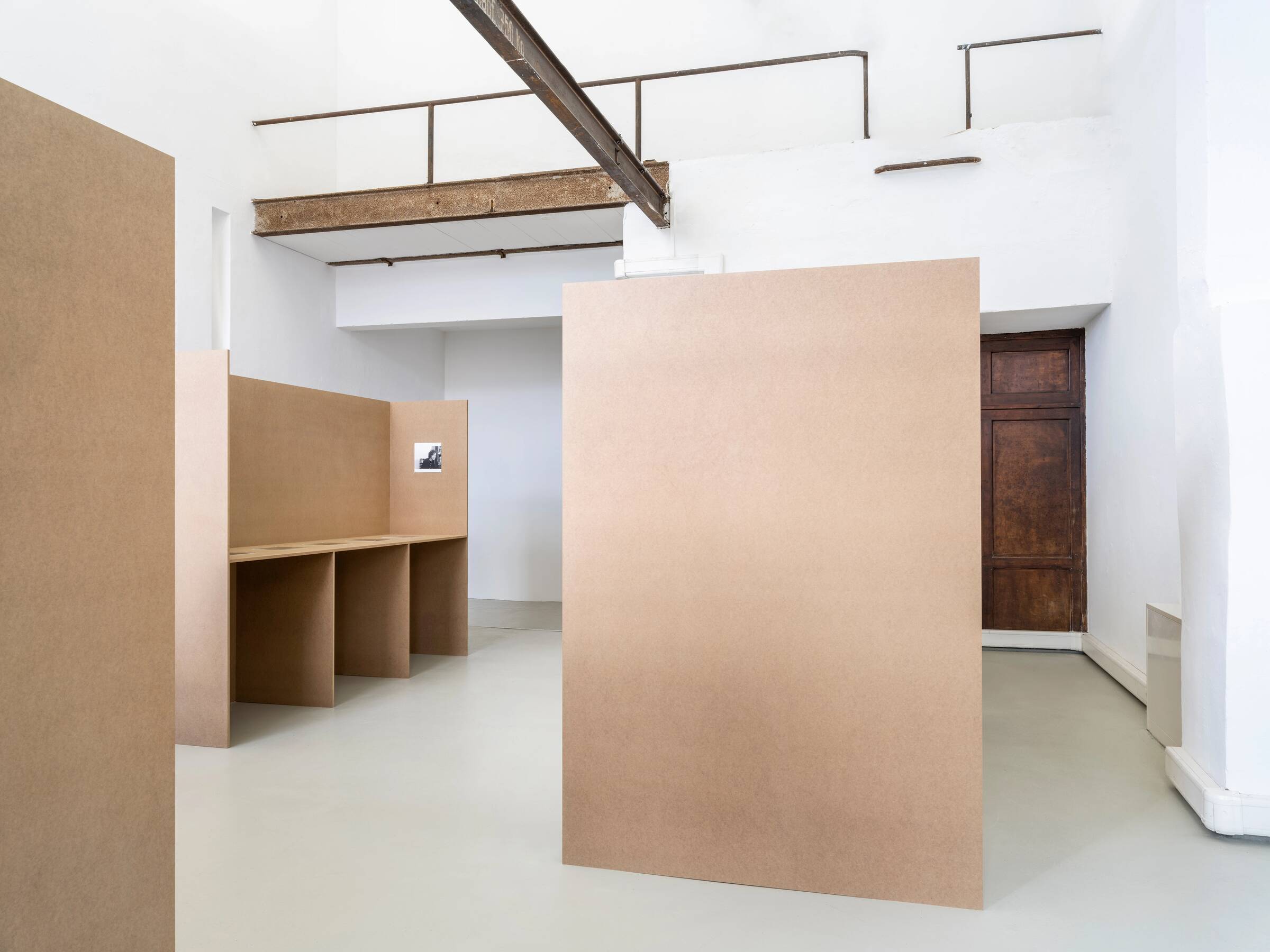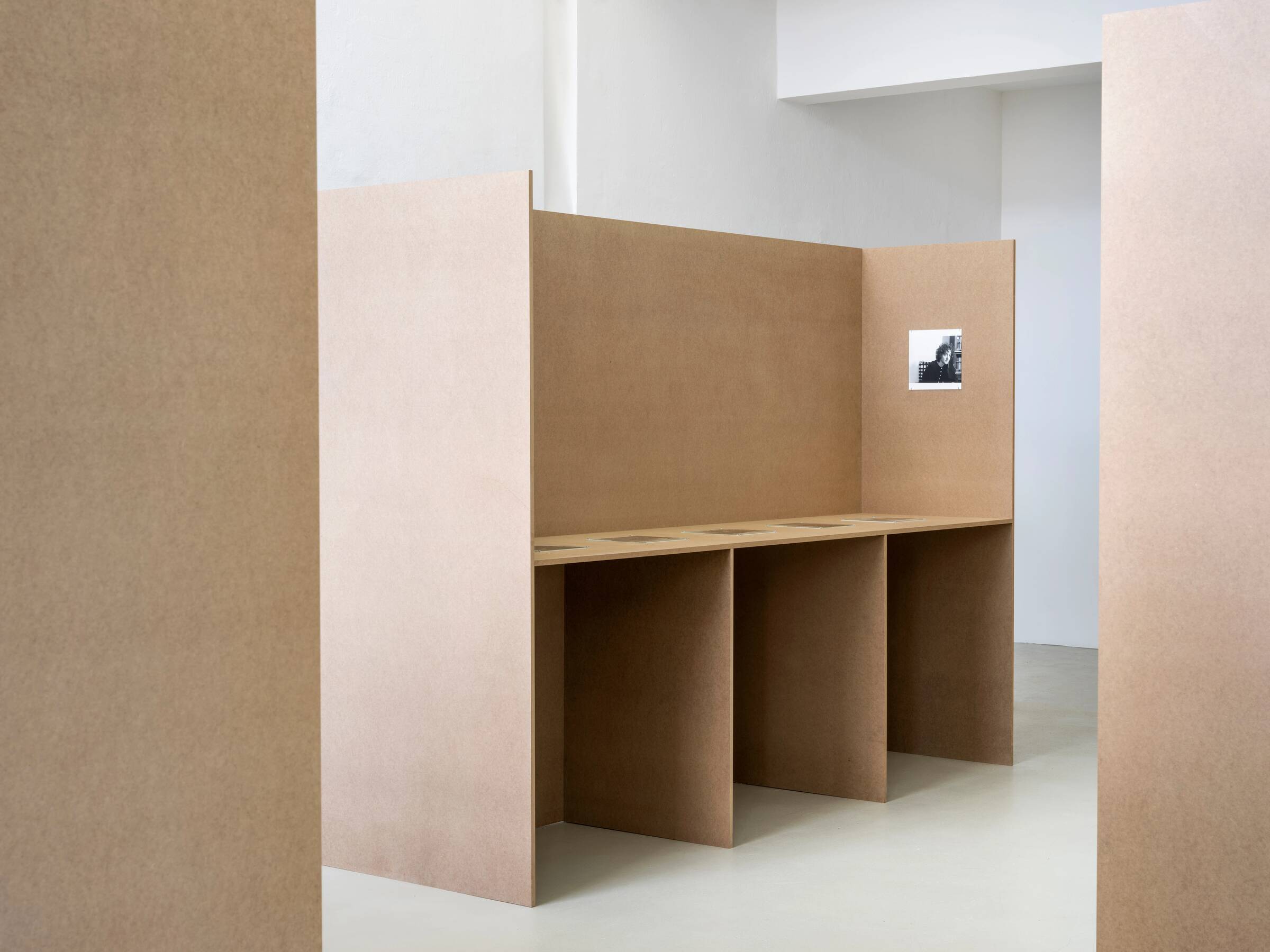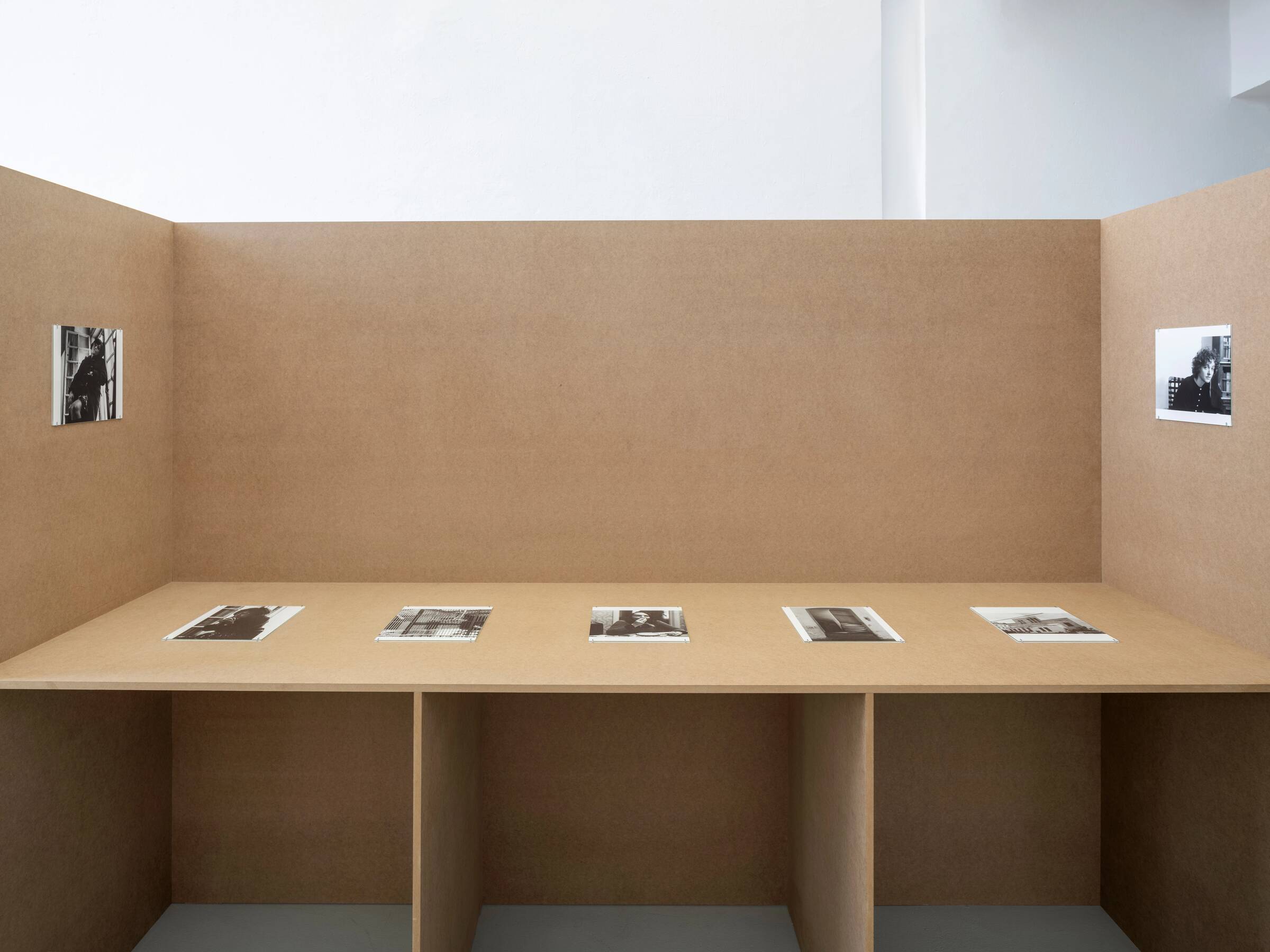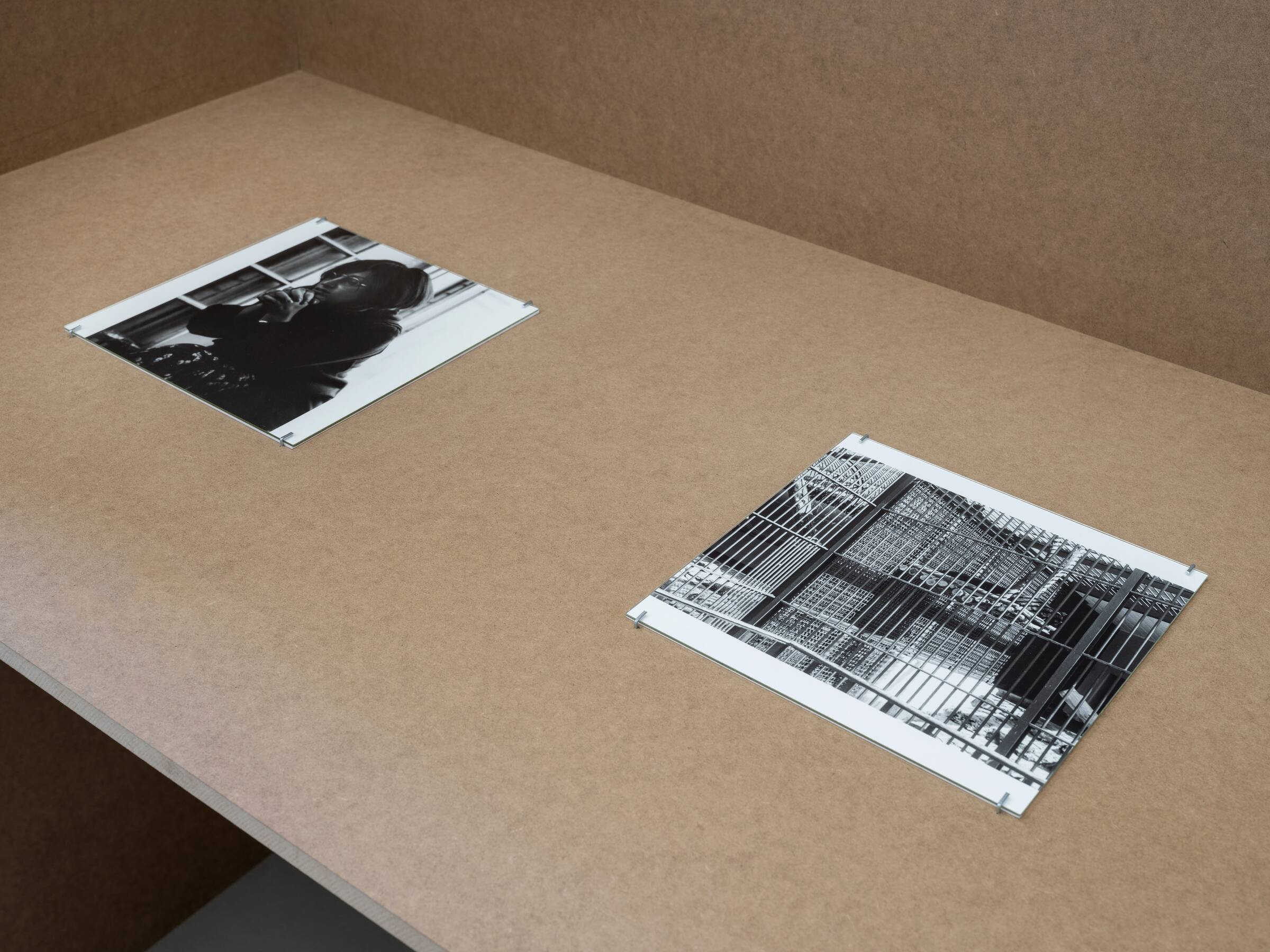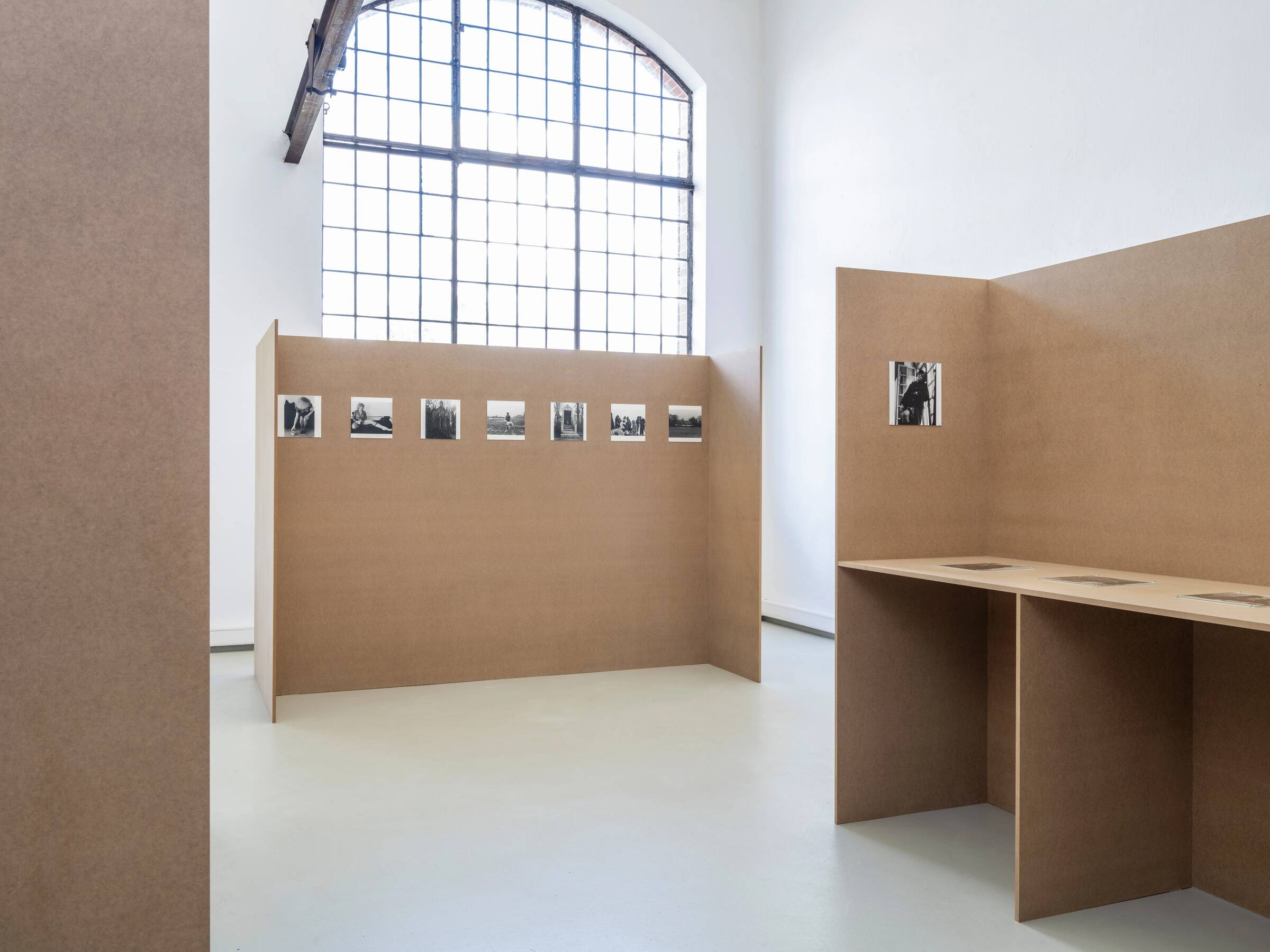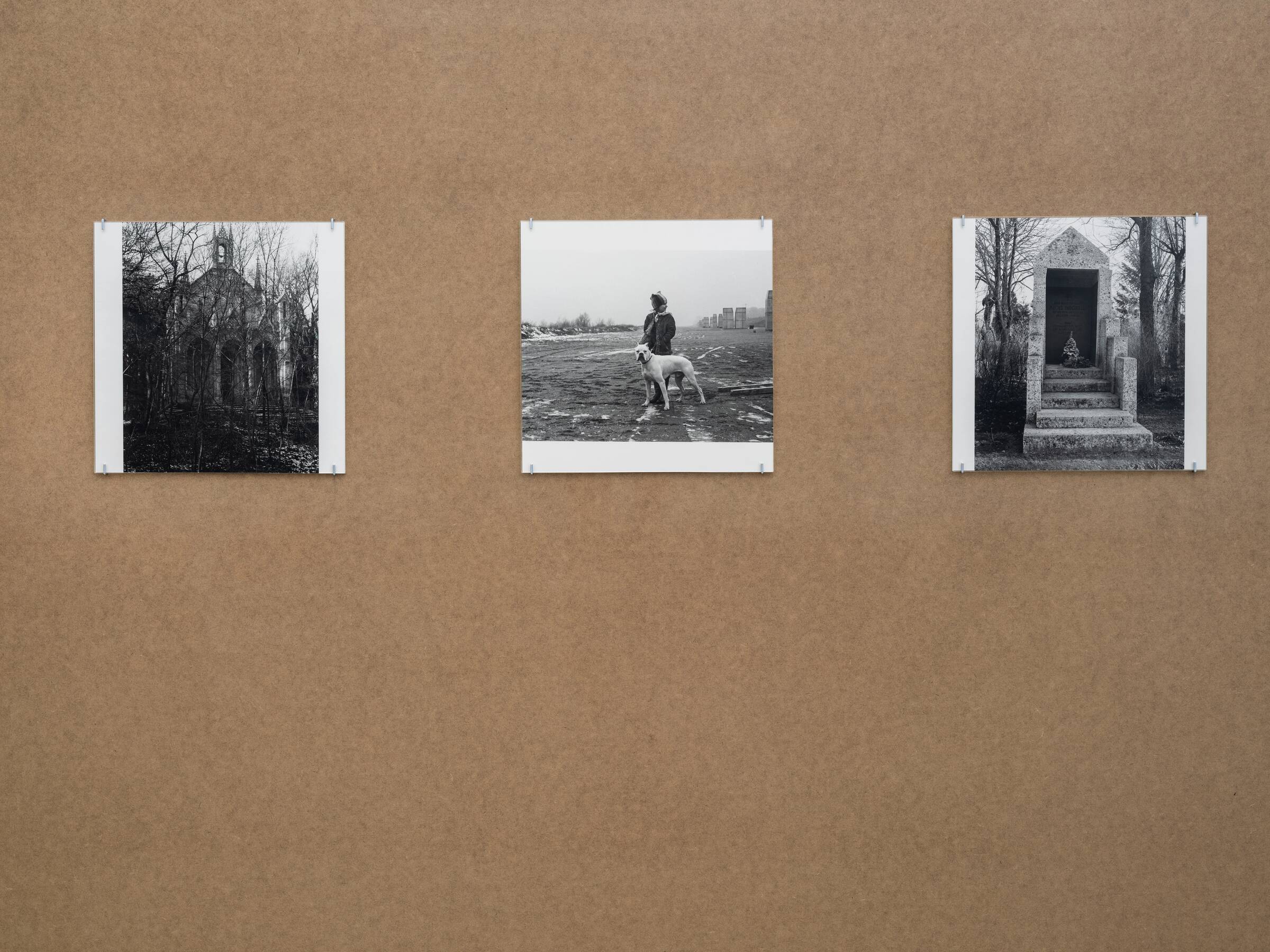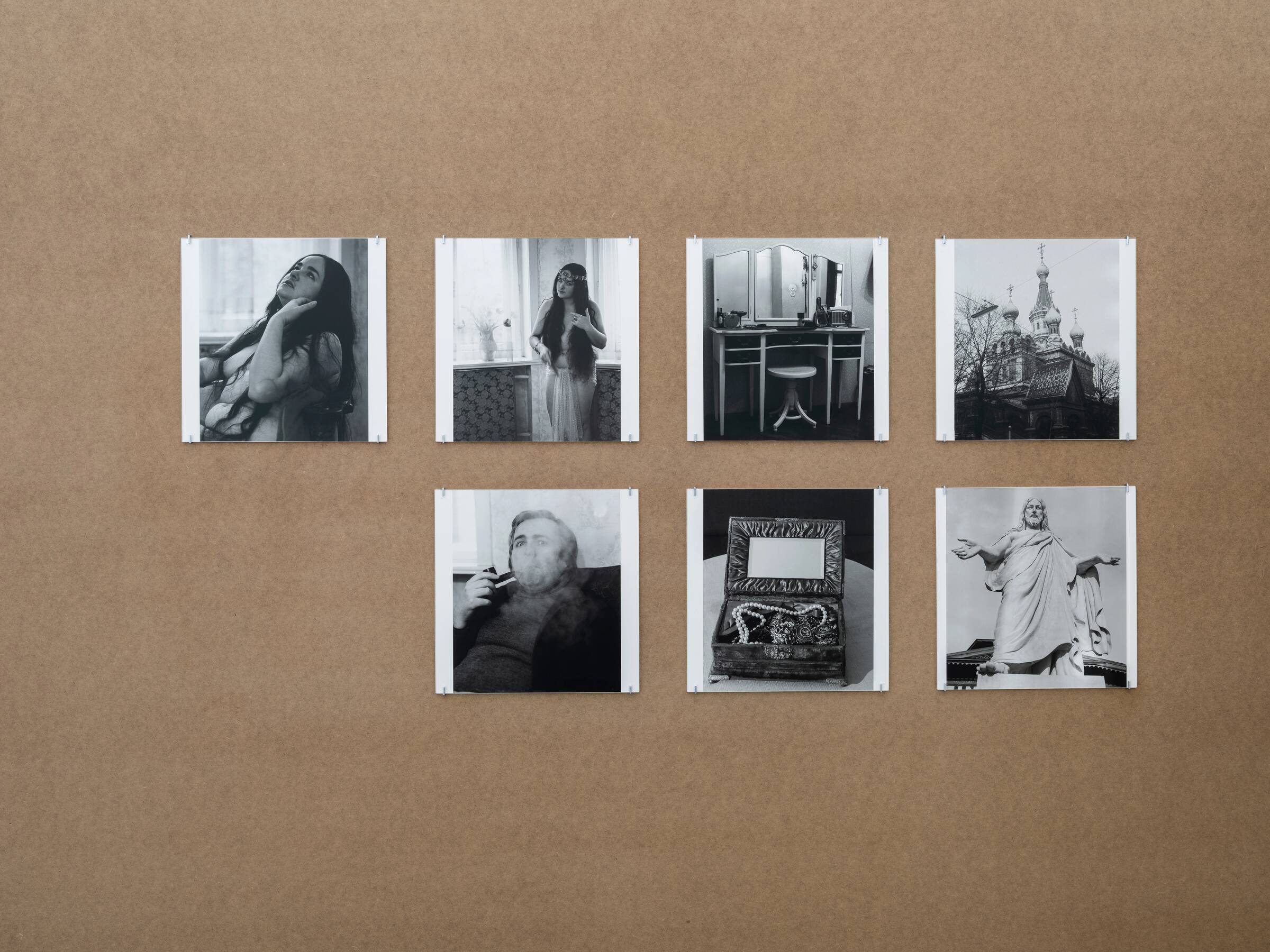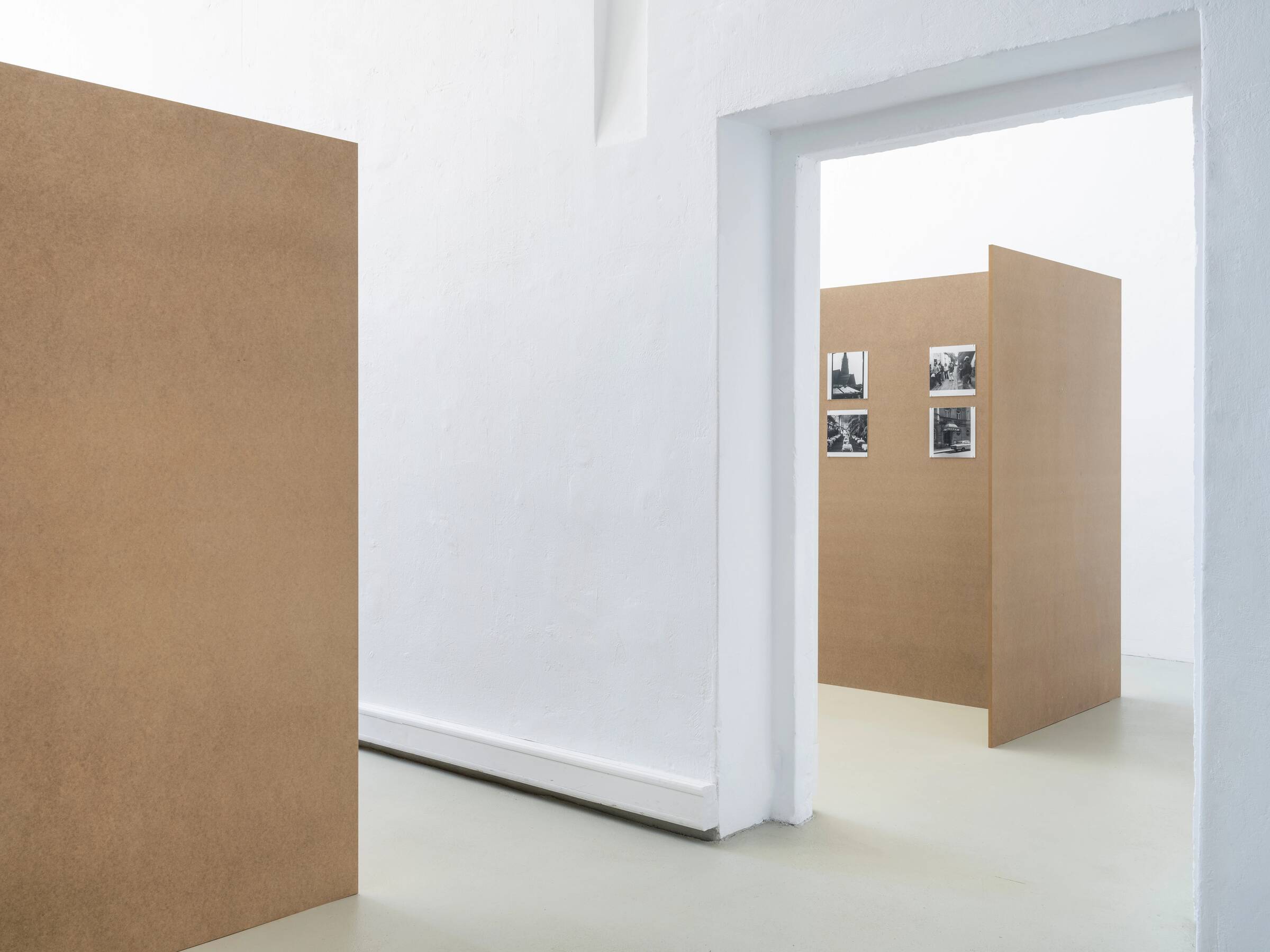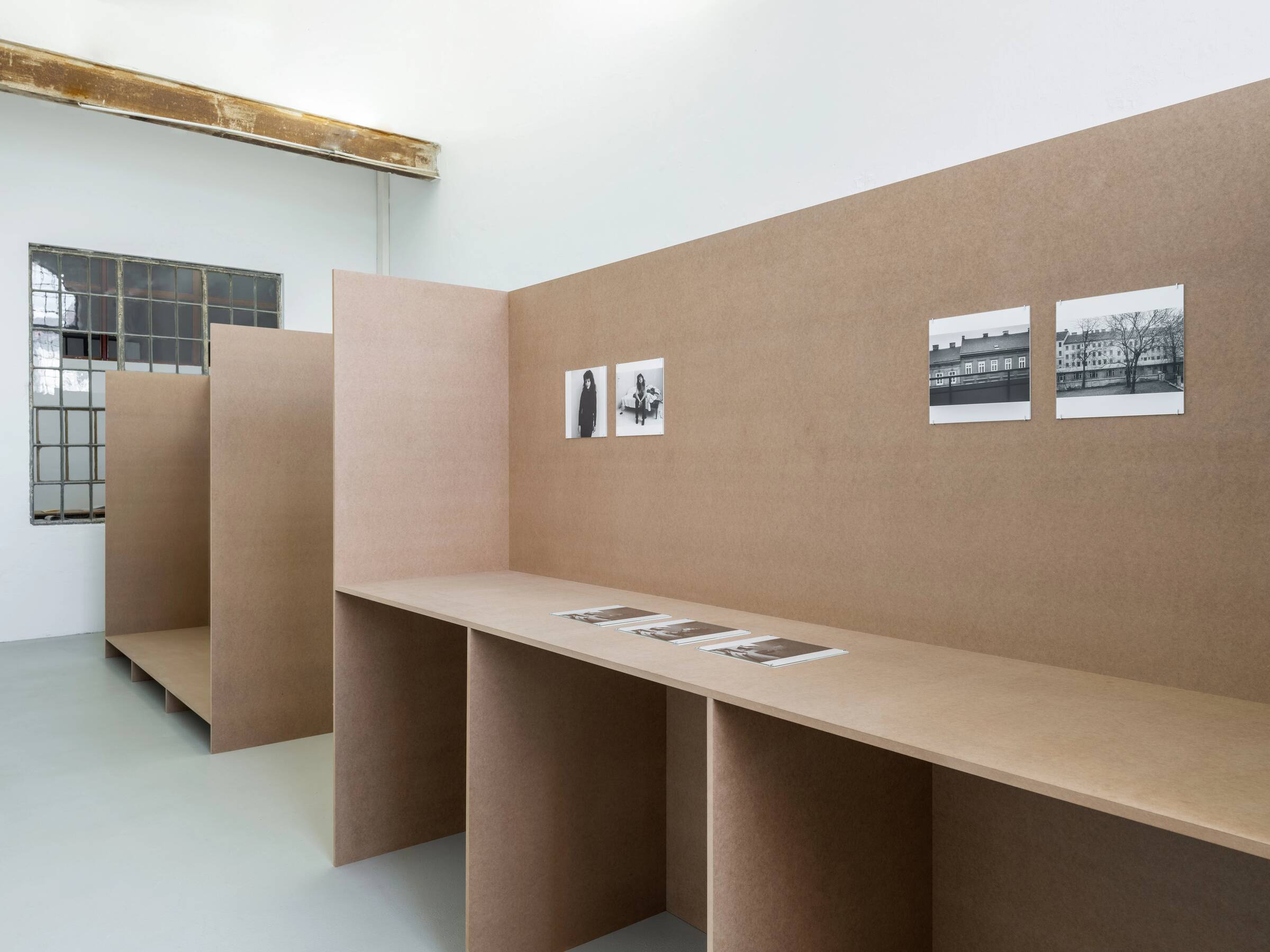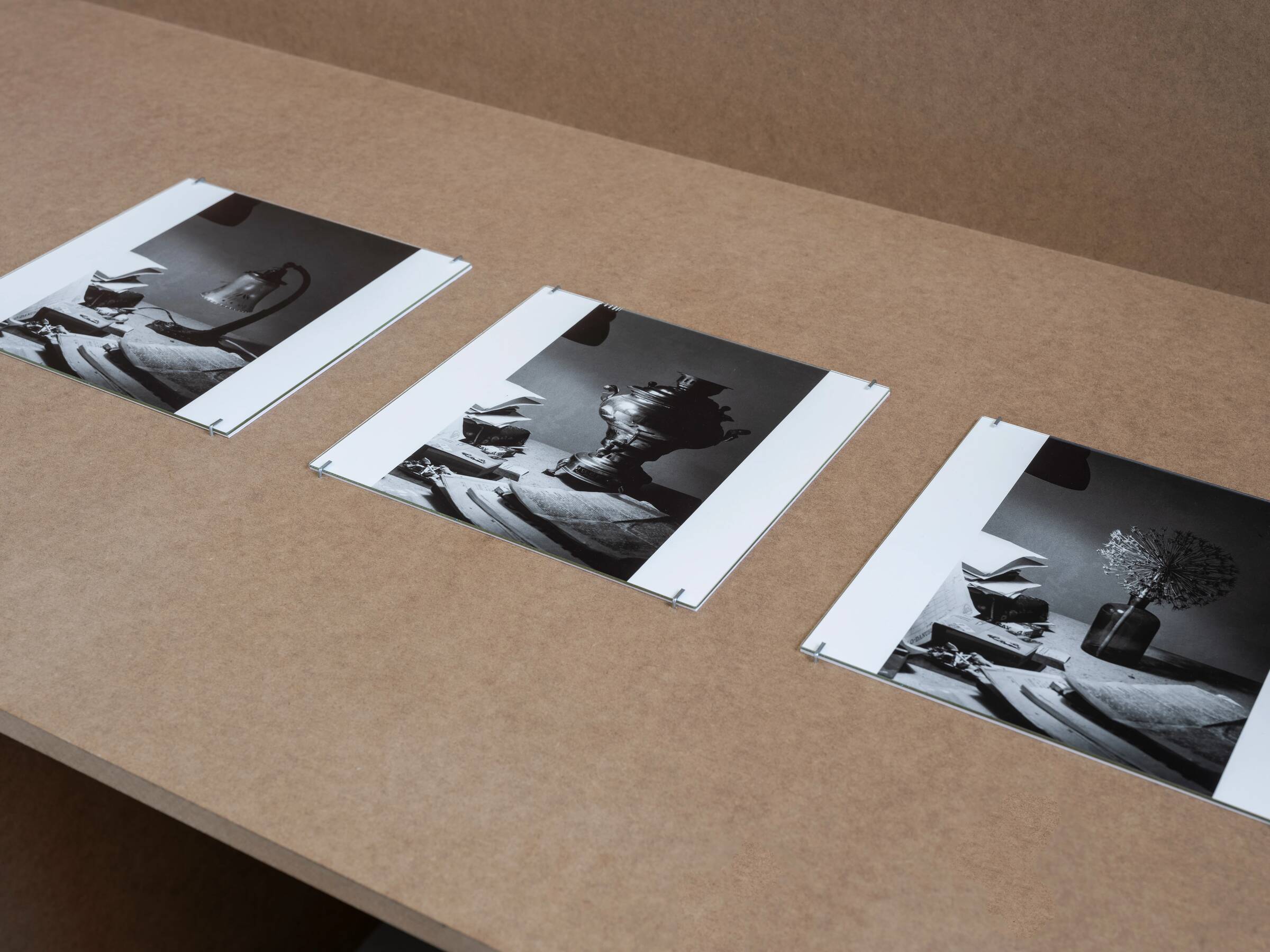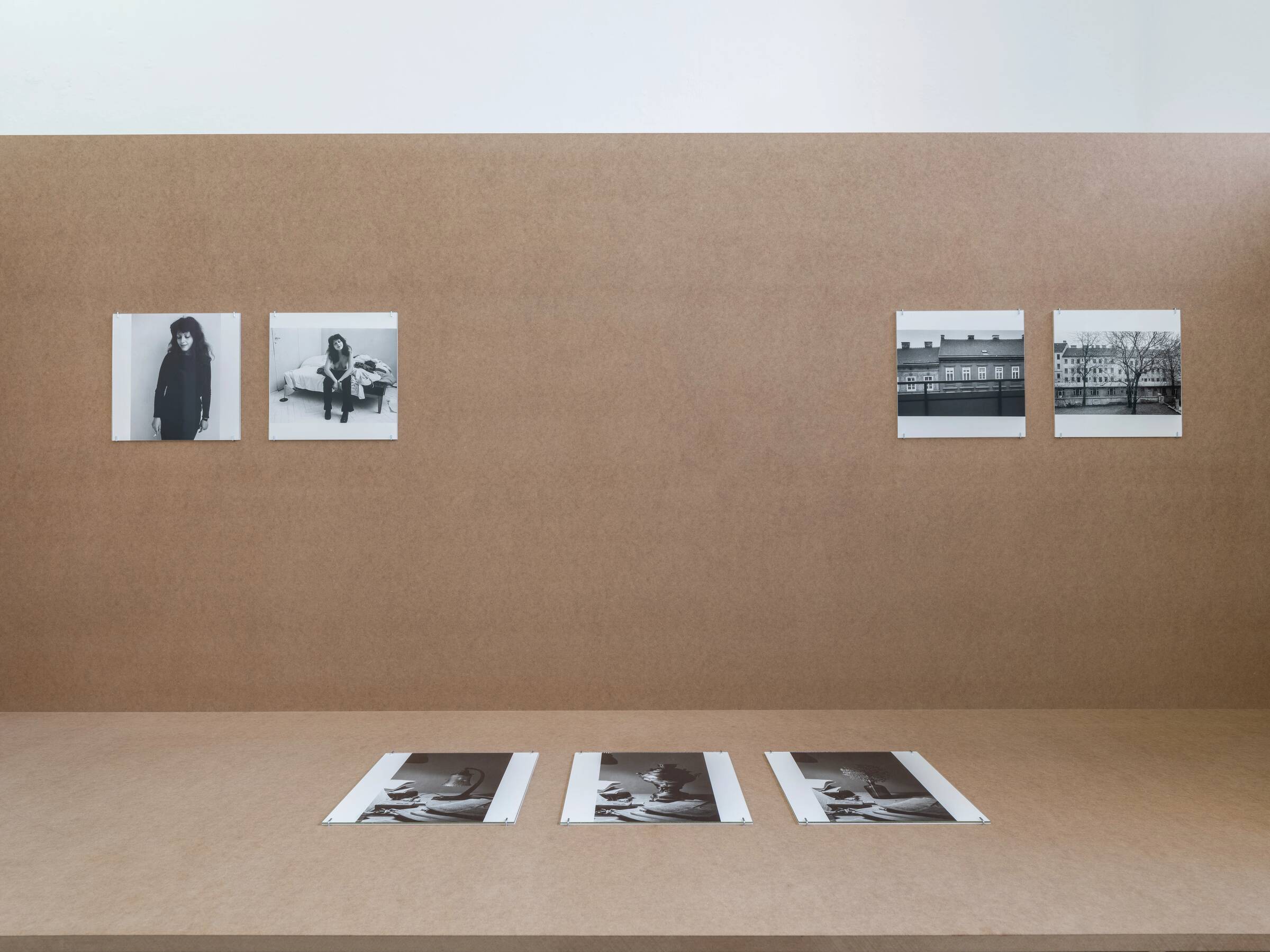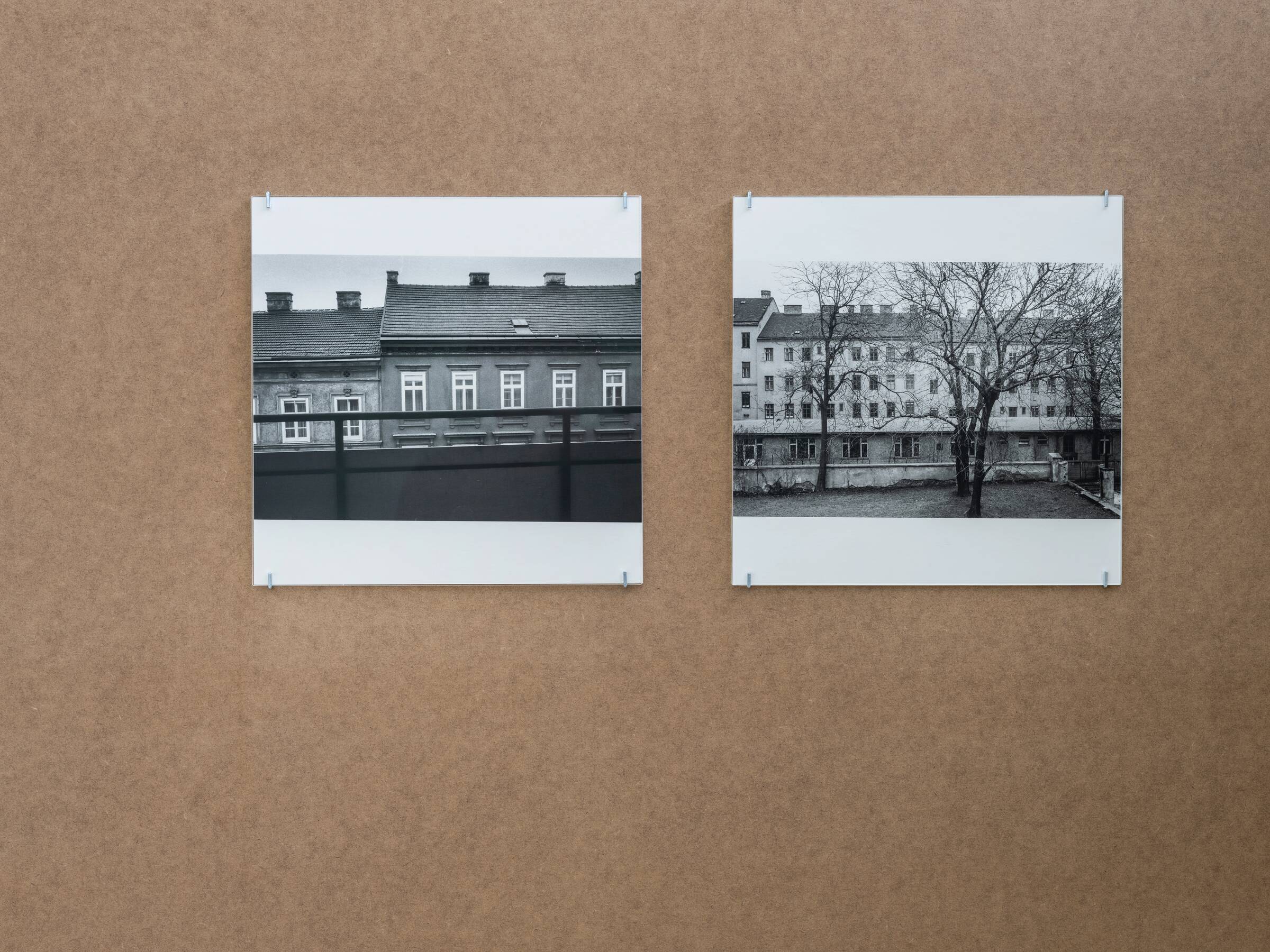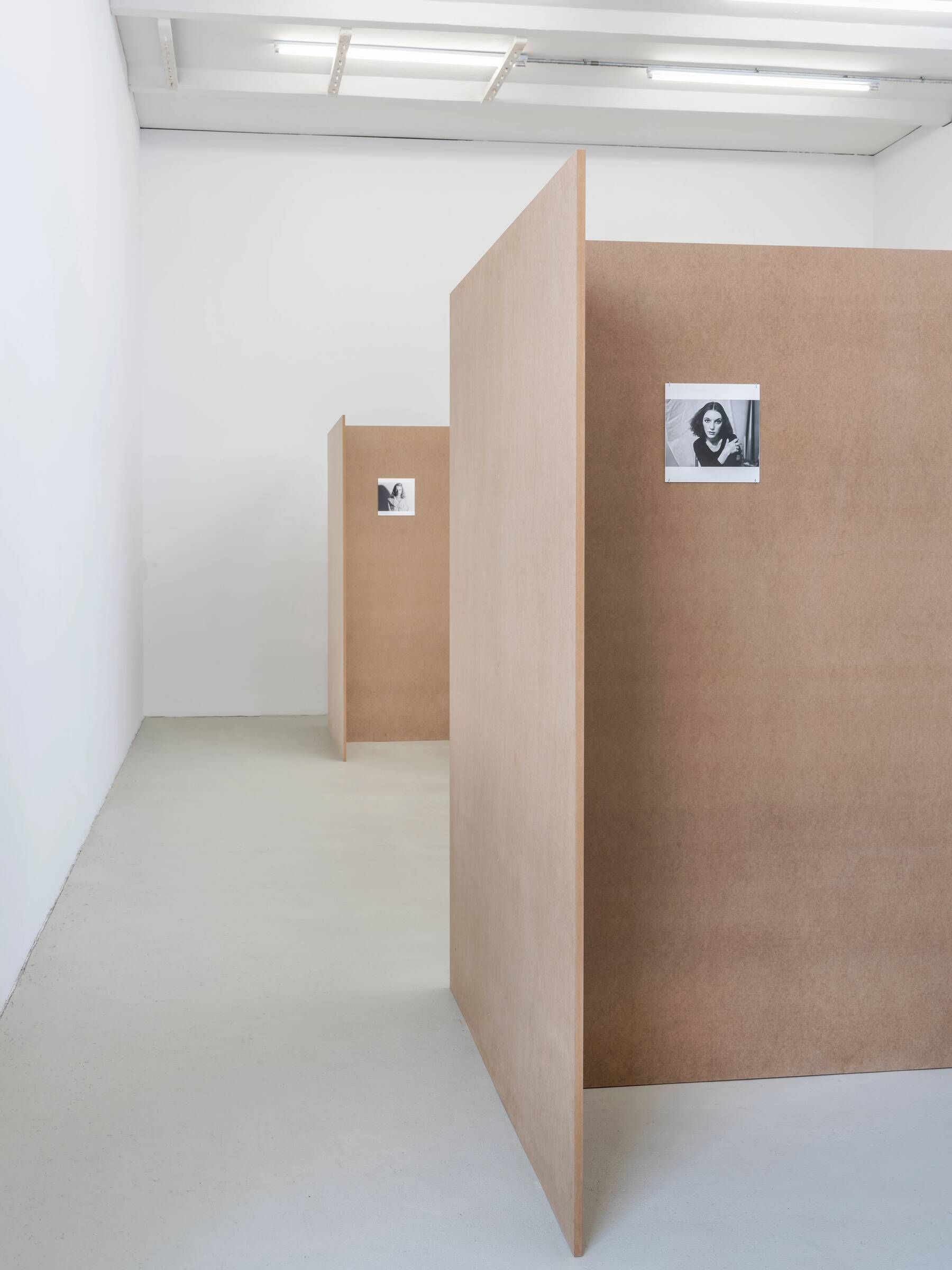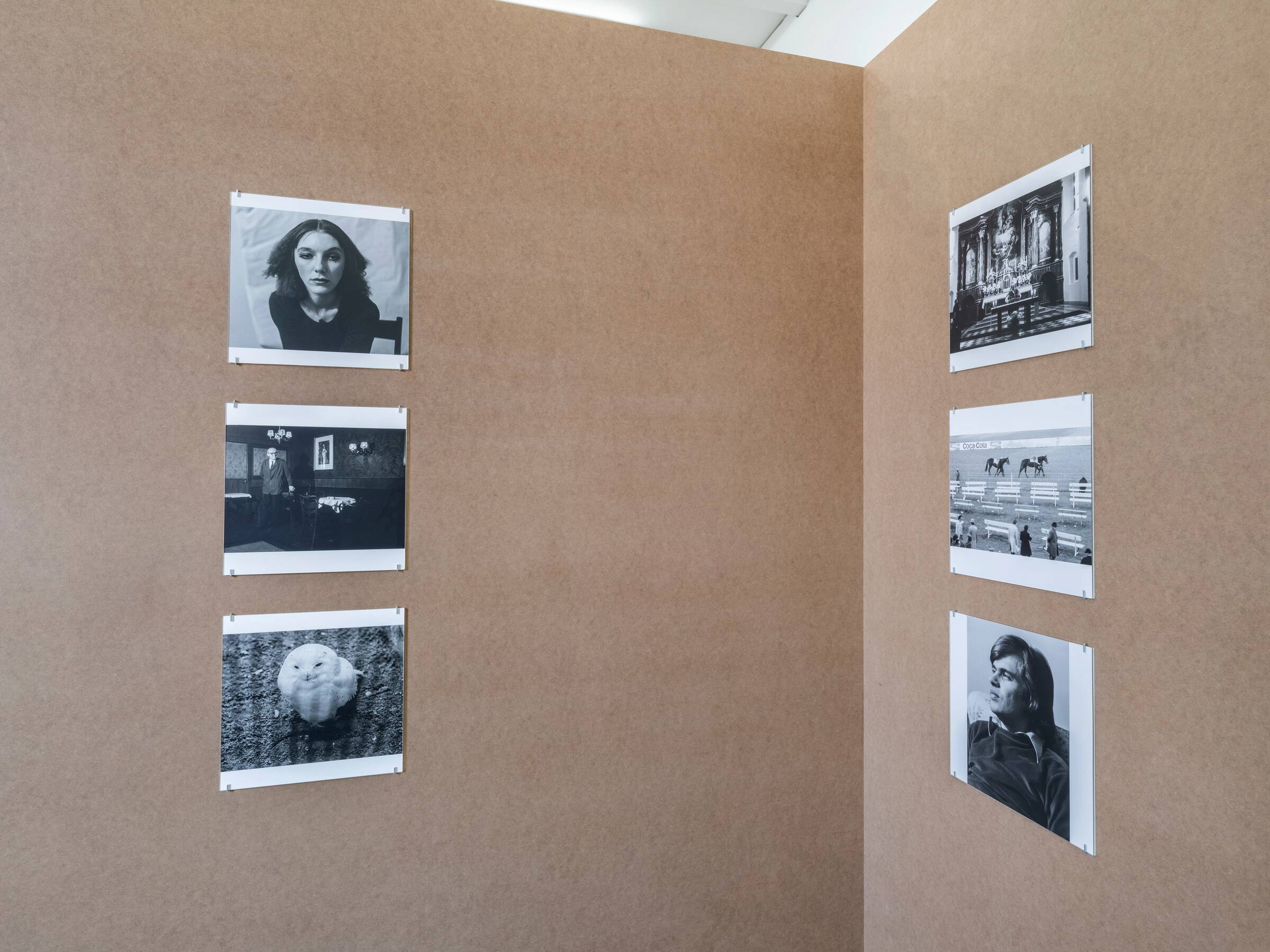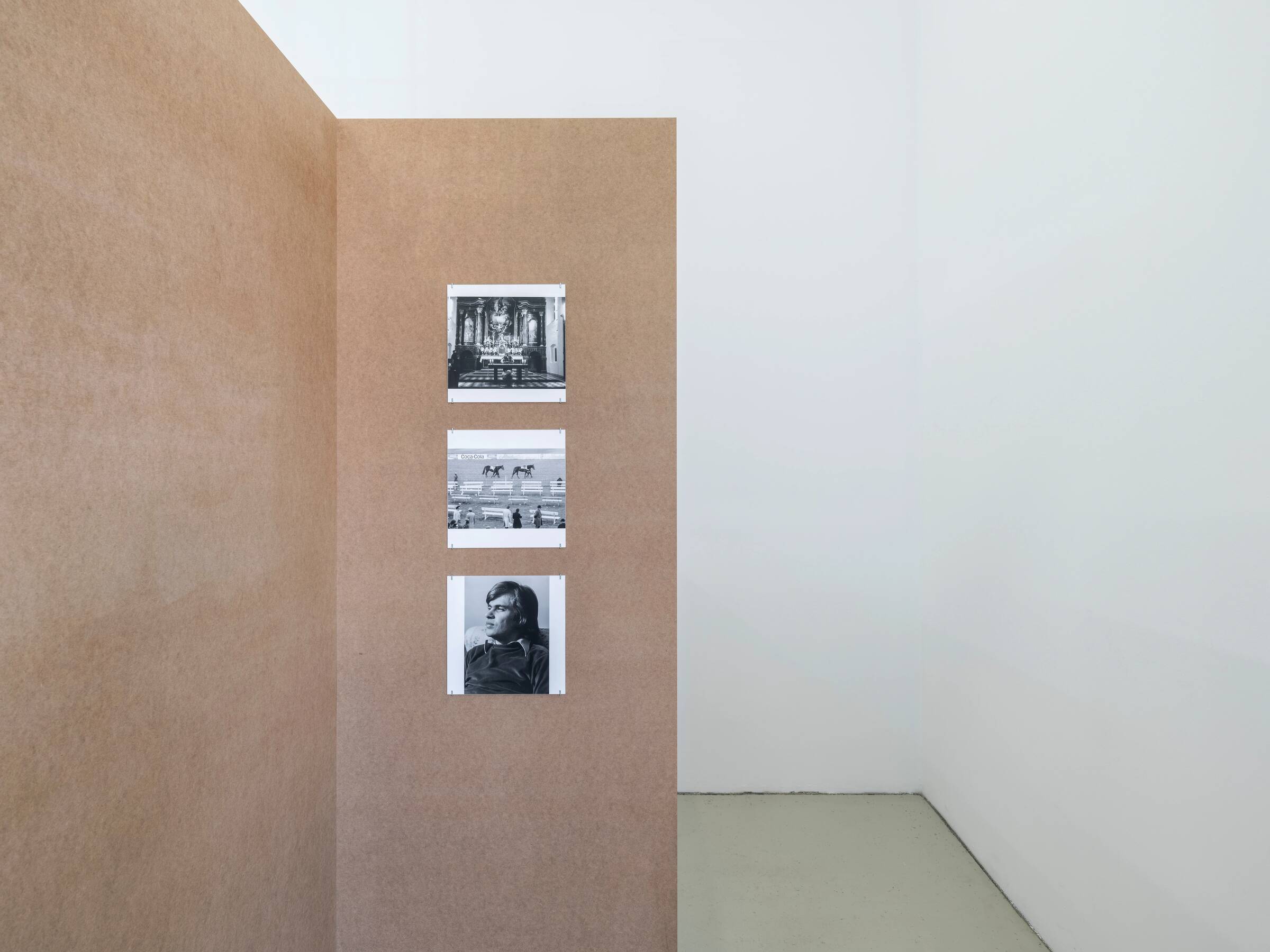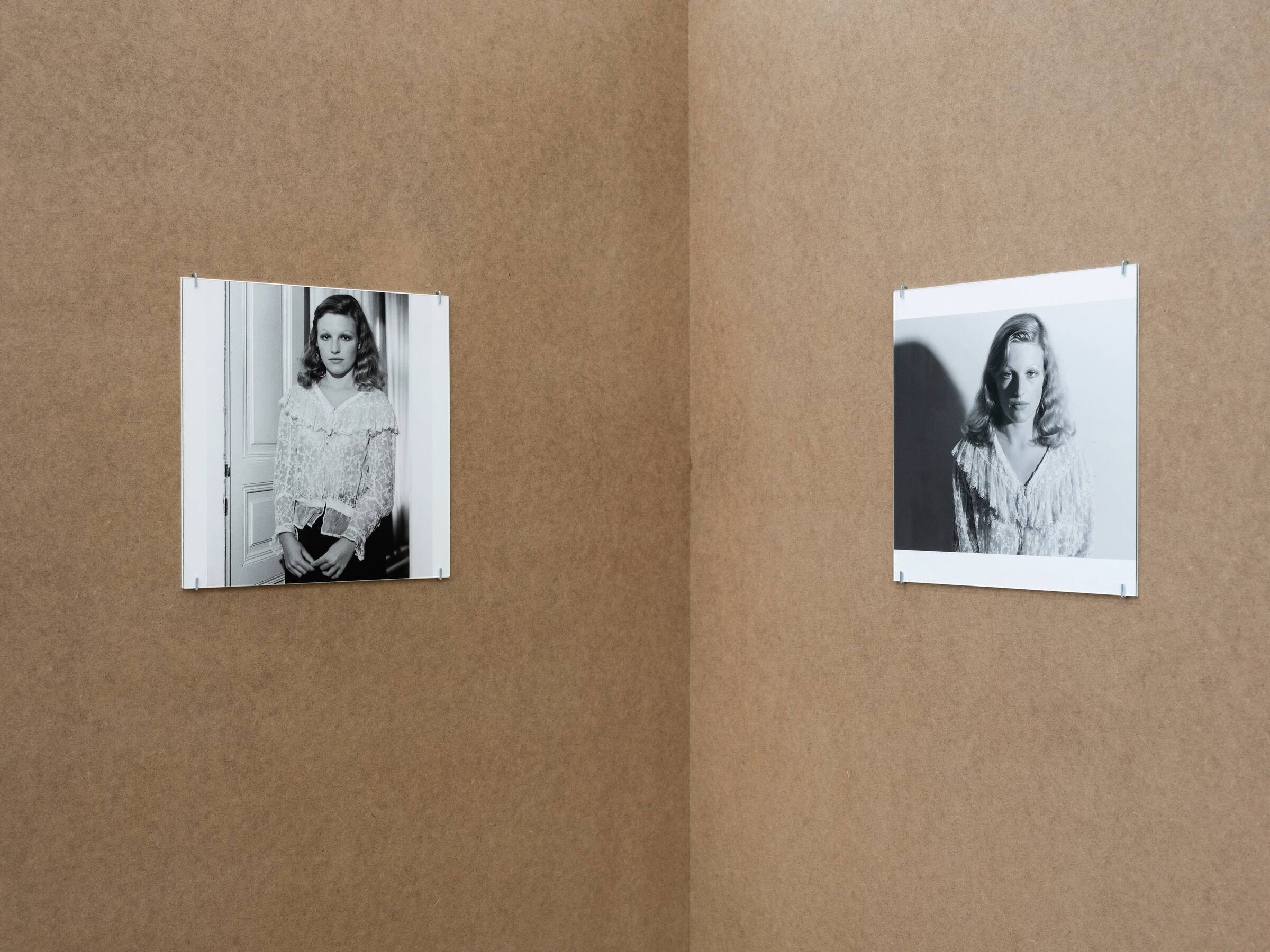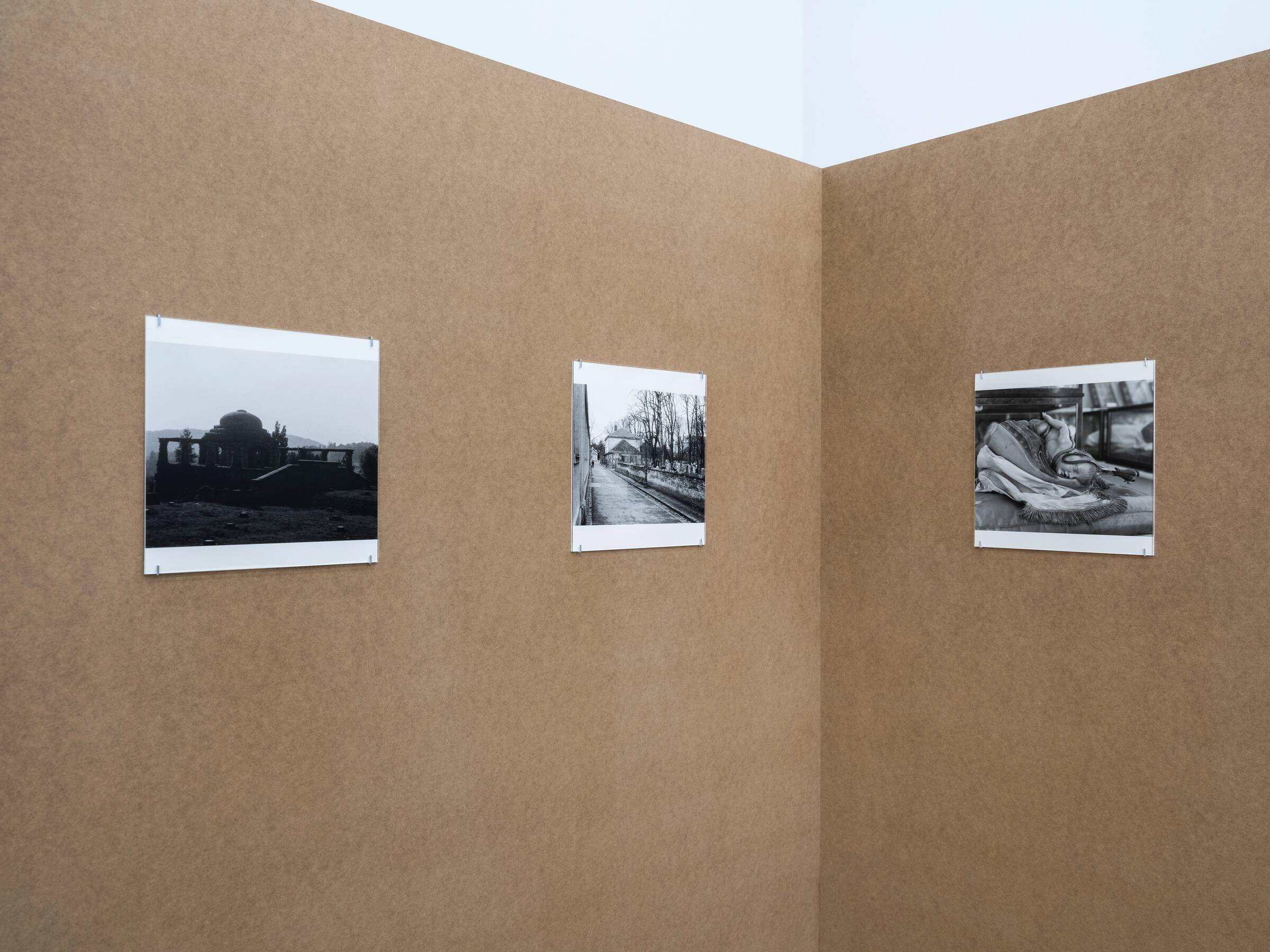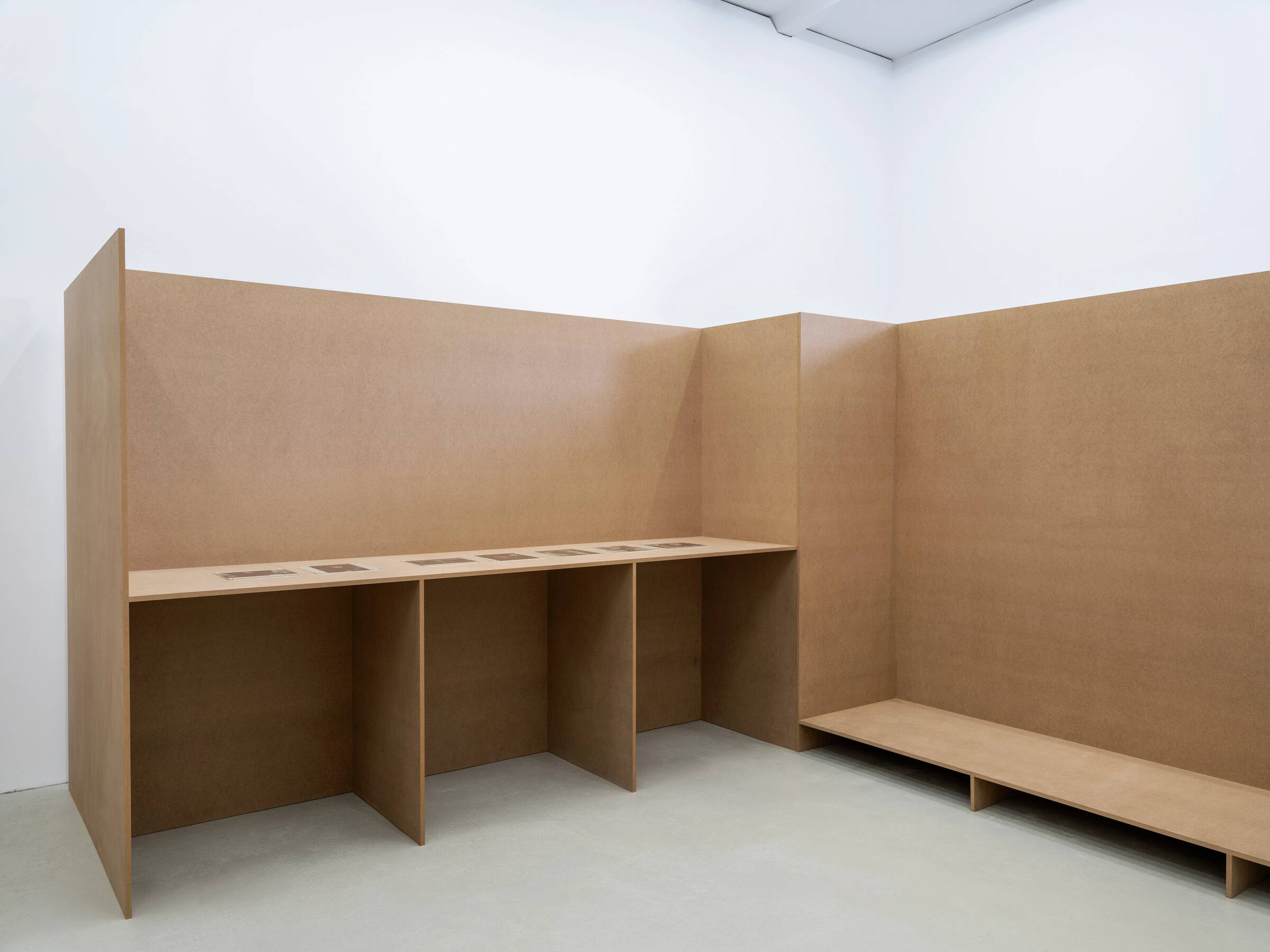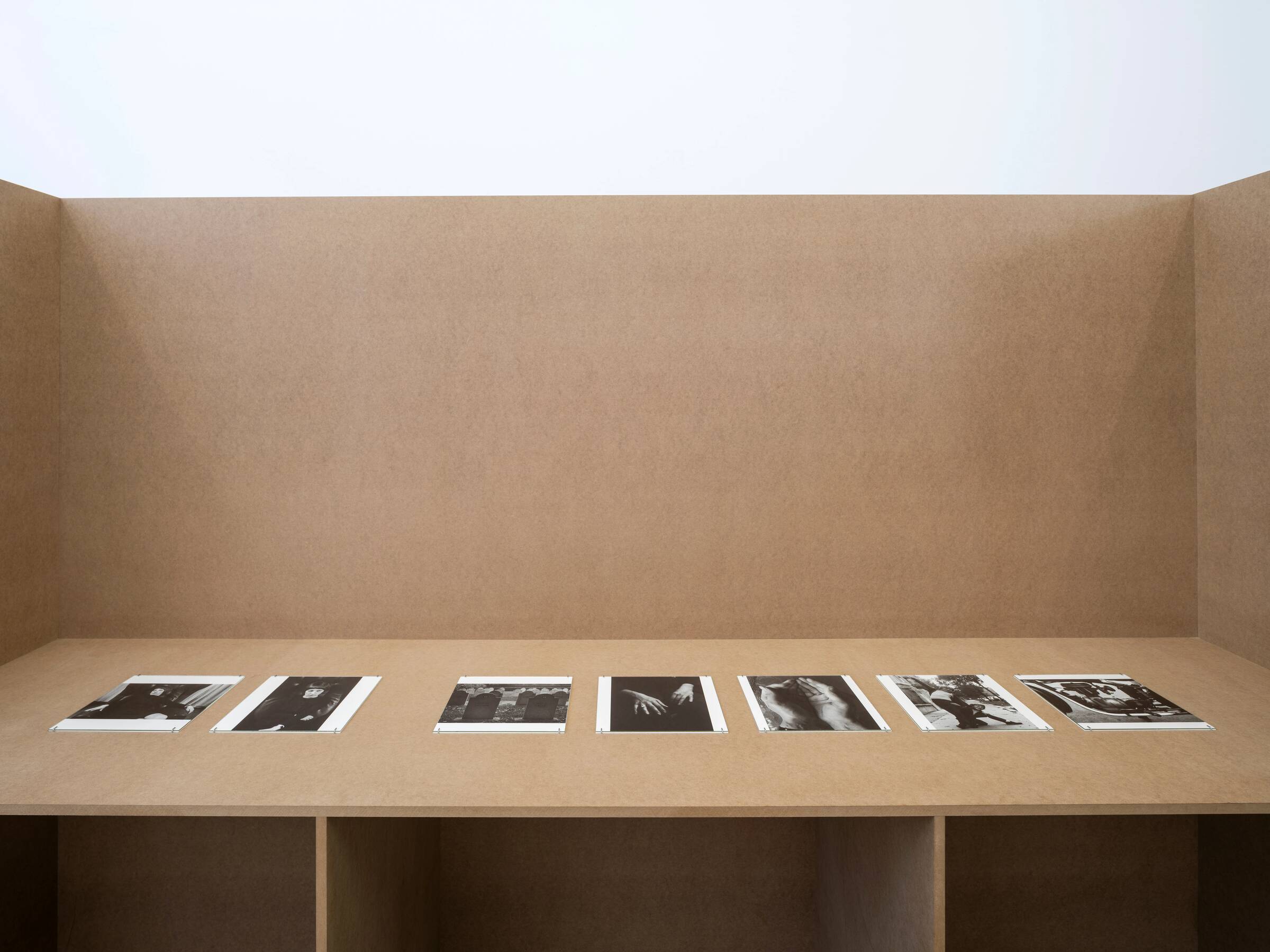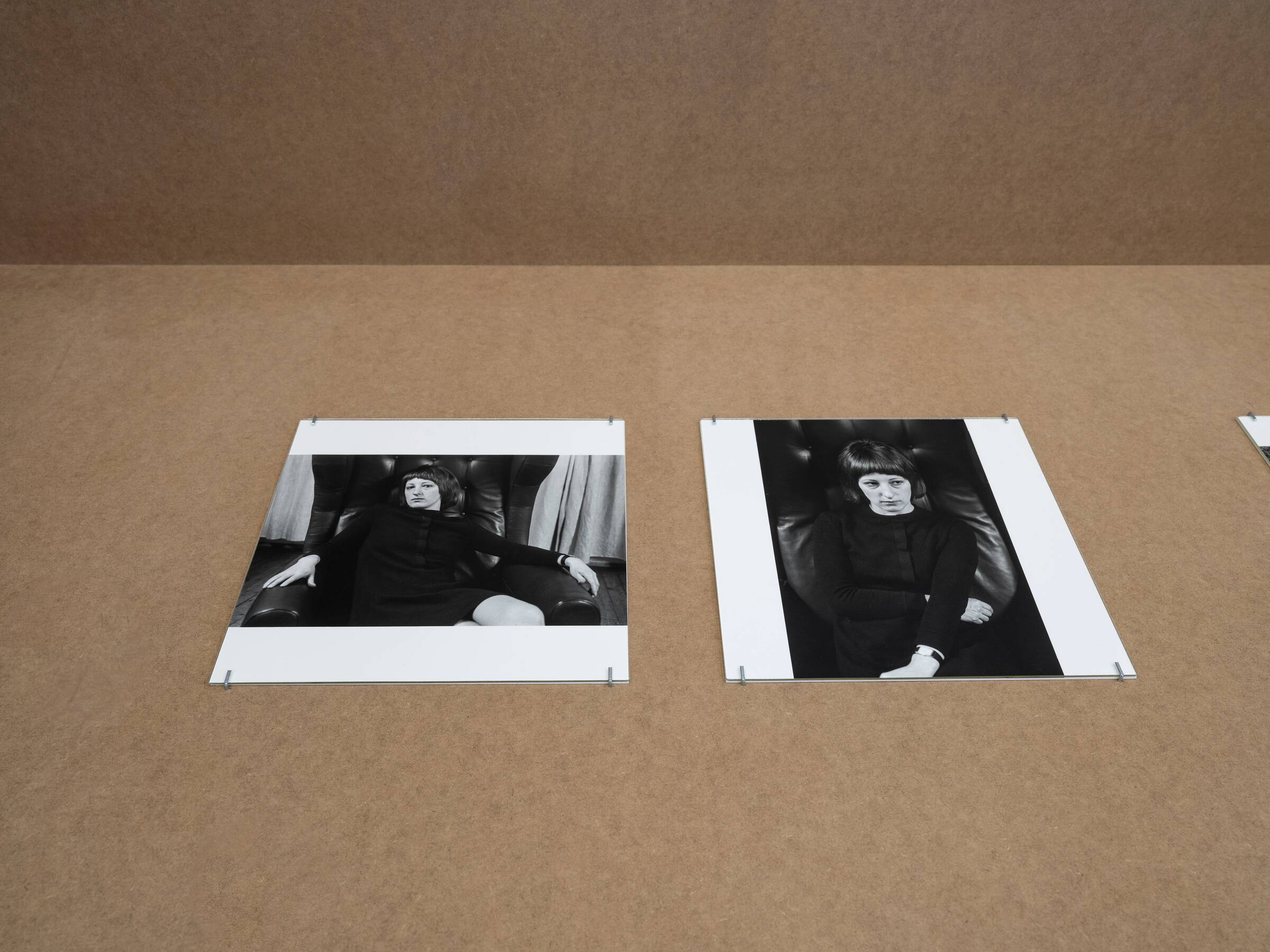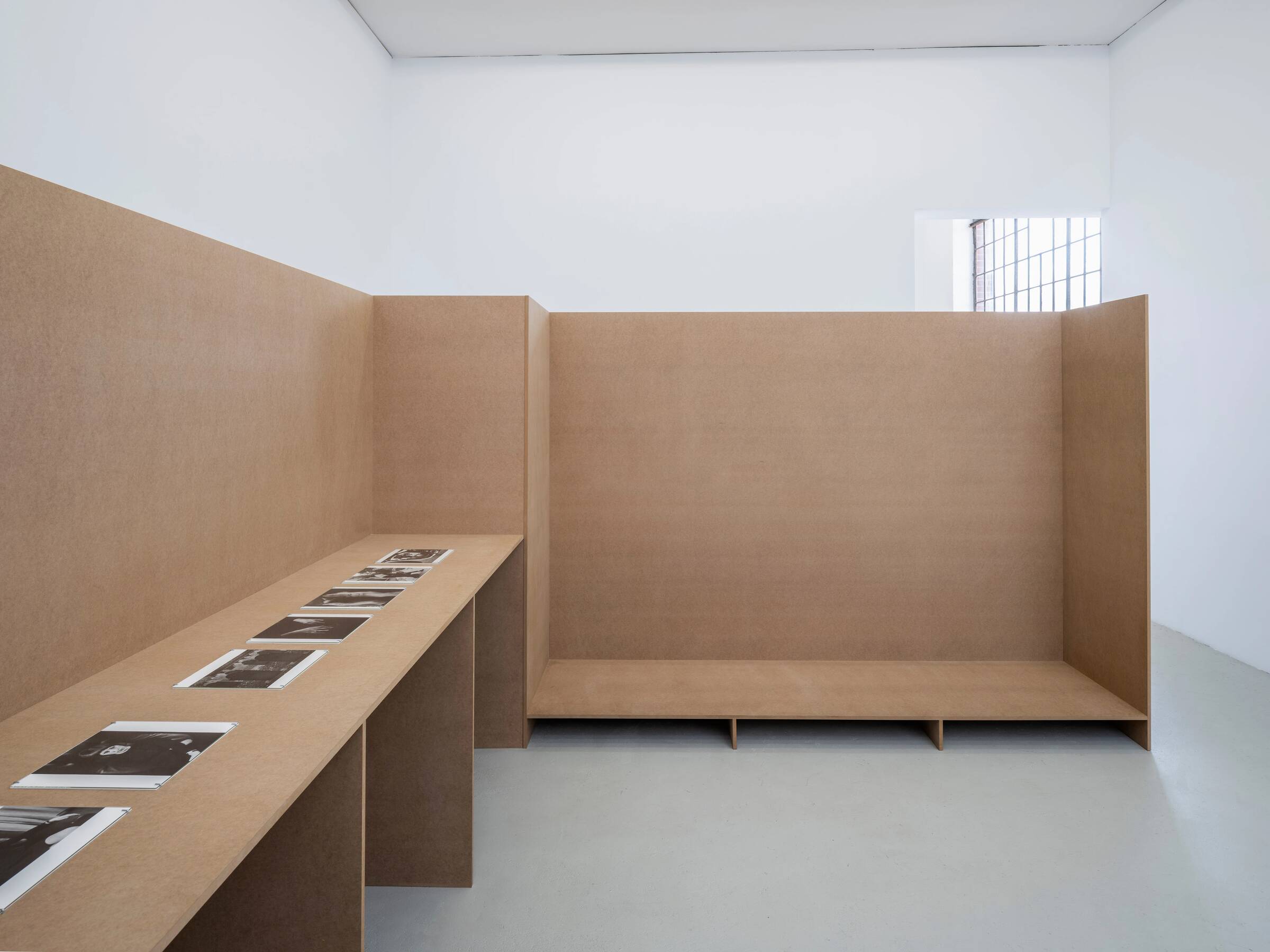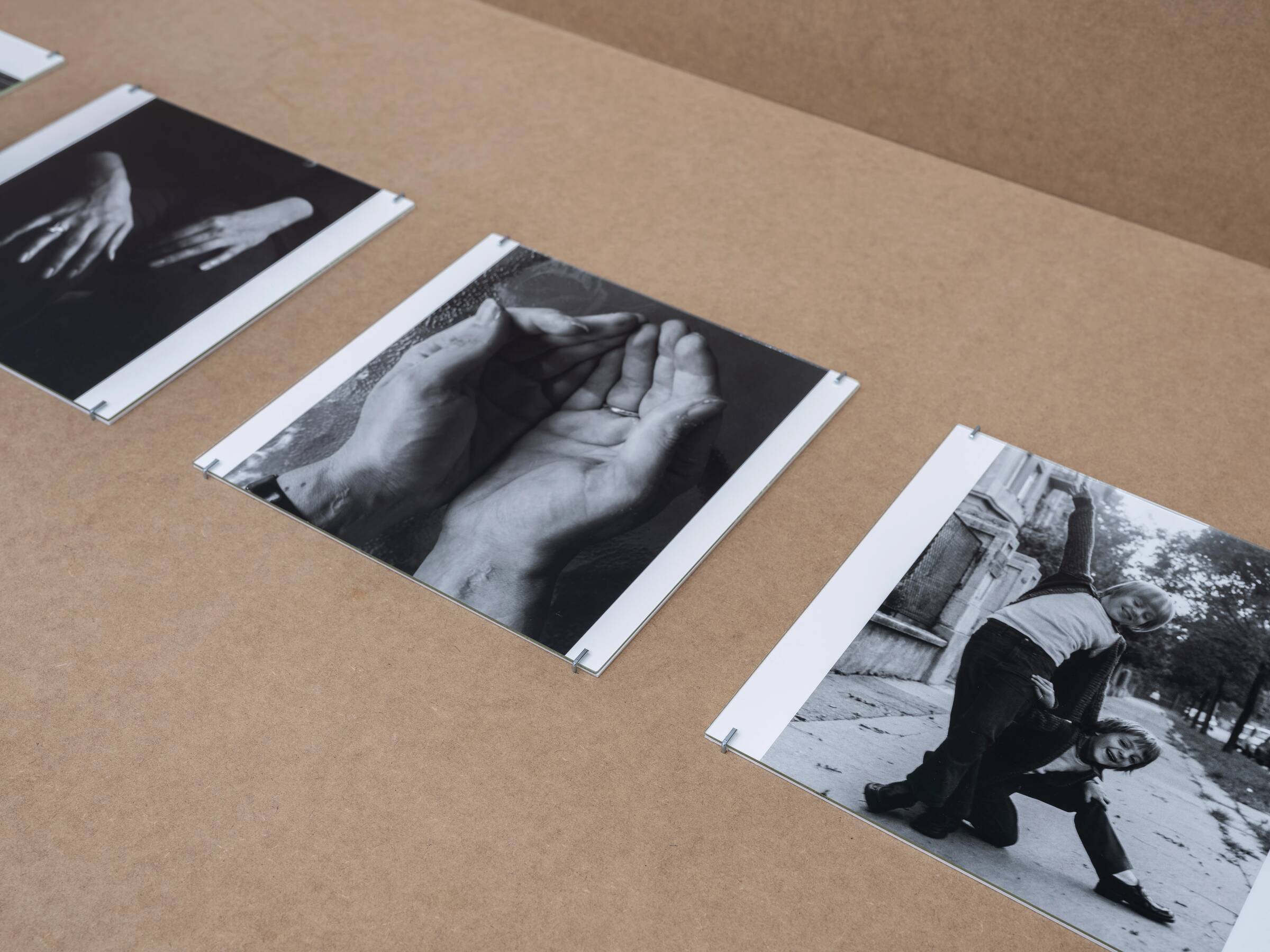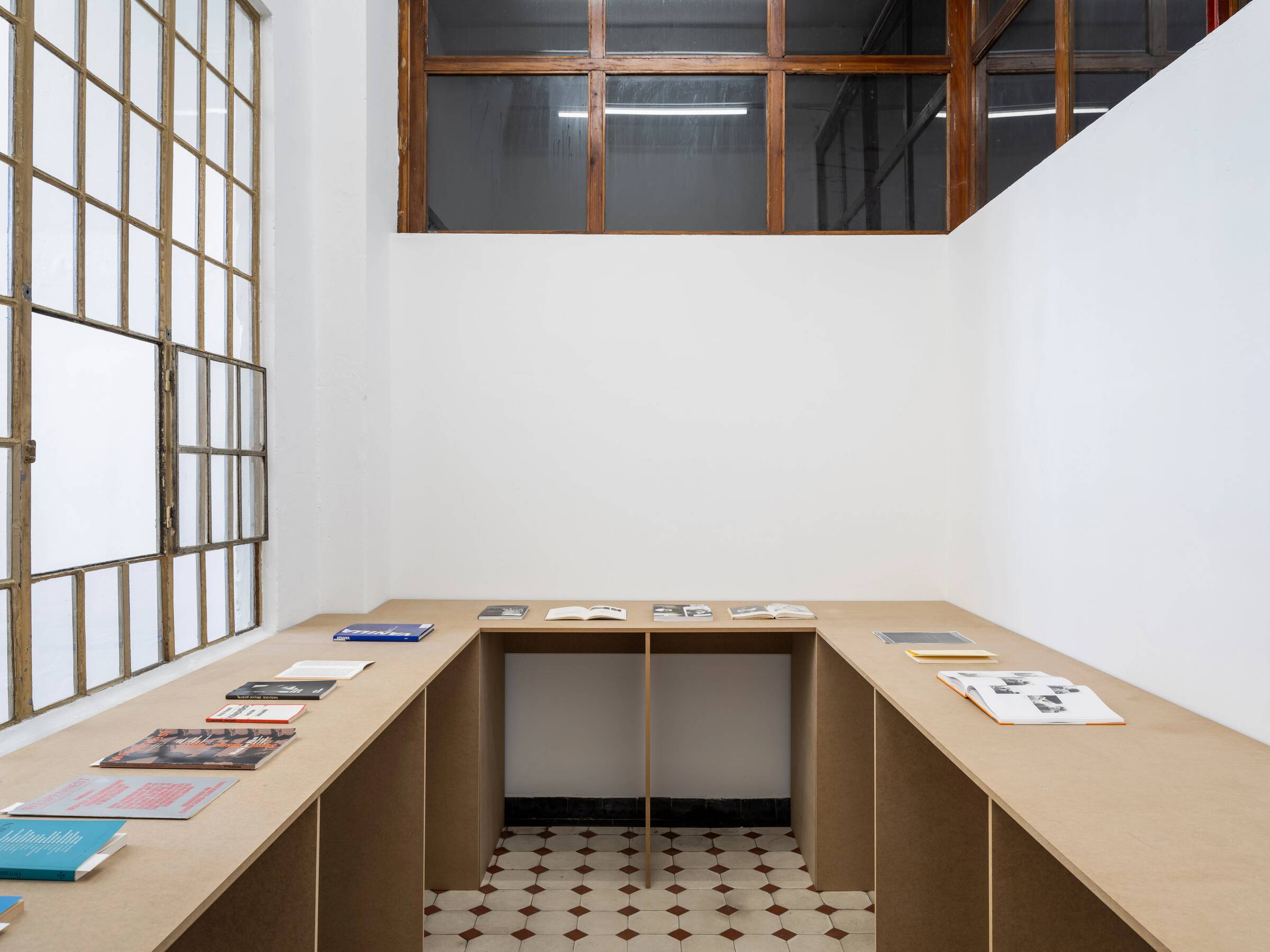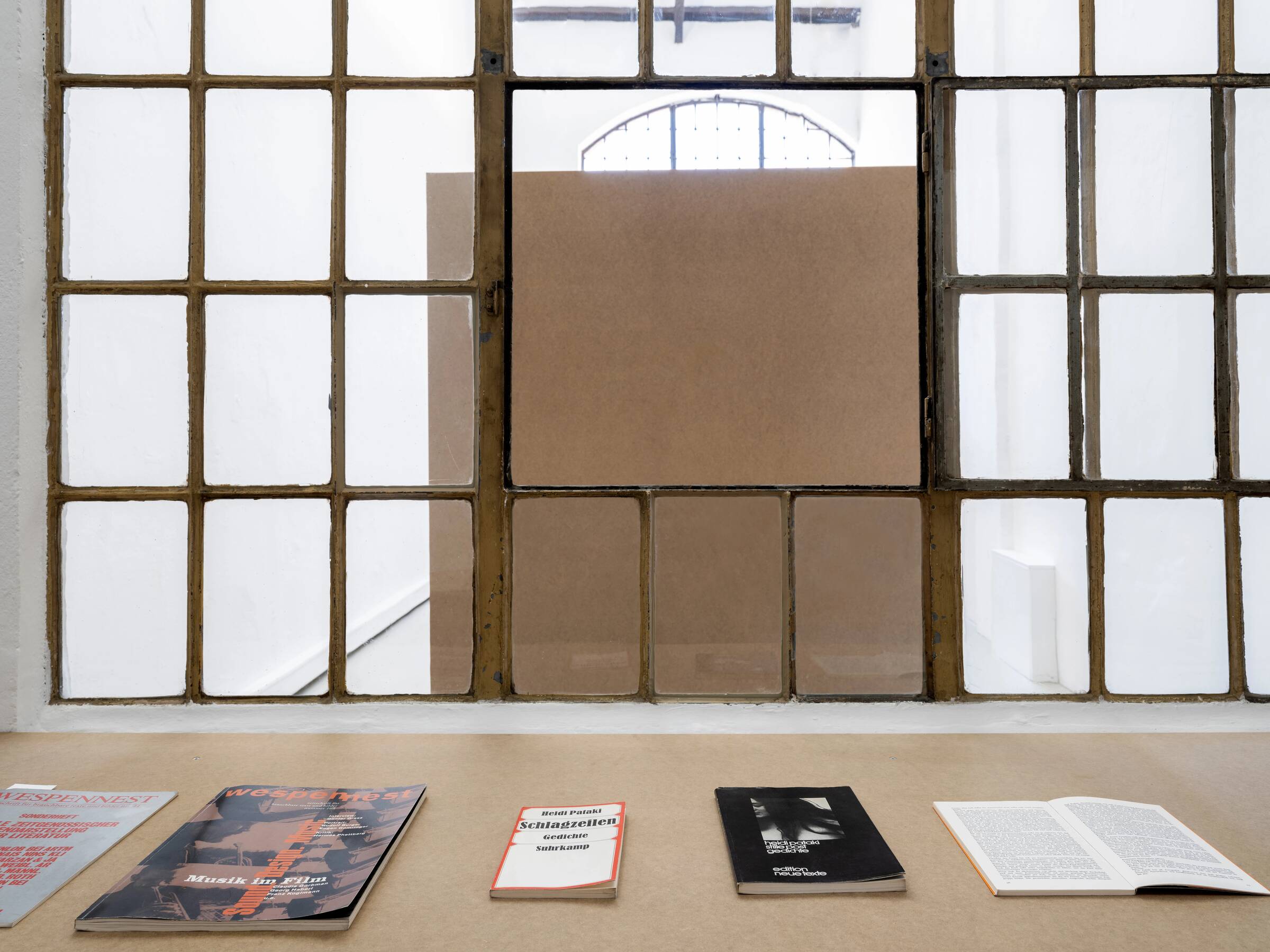Exhibition Text
In dialogue with:
Seiichi Furuya, Deva Schubert, Marietta Mavrokordatou,
DAVRA, Paul Niedermayer, Claudia de la Torre
With 8 erweiterte portraits the Kunstverein für Mecklenburg und Vorpommern in Schwerin presents an exhibition that places the work of Austrian photographer Cora Pongracz (1943-2003) in focus. Through the medium of photography Pongracz’s works open a dialogue about identity and a politics of representation that is sensitive towards diversity. For this exhibition in Schwerin – the first comprehensive institutional presentation of Pongracz’s works outside of Austria – one of her most important series of works,8 erweiterte portraits, 1974, is shown in its entirety for the first time. In order to reflect both the significance and the potential of Pongracz’s artistic practice in the context of current social discourses, a number of contemporary artists have been invited to respond and relate to Pongracz’s work through their own photographs, texts, performances, and other forms of critical interventions, throughout the exhibition.
Cora Pongracz was born in Buenos Aires in 1943. Due to her mother’s Jewish ancestry, the Pongracz family, originally from Vienna, had been forced to flee to Argentina. The family remained in exile, unable to return to Europe until the end of the 1940s, at which point they went first to England, then to Austria, and later to Germany. It was there that Pongracz received her education in photography. In the vicinity of Frankfurt am Main she attended Marta Hoepffner’s photography school from 1962-63, after which she studied at the Bavarian State Institute of Photography in Munich from 1963-64. Her student years thus coincided with the social upheaval of the 1960s. She lived through this period initially in Munich and later in London, where she came into contact with various (youth) movements, including the anti-psychiatry movement, who, as part of the post-war generation, rebelled against the established authorities and values systems. In 1968 Pongracz eventually moved back to Vienna where she, now married to poet and essayist Reinhard Priessnitz, became involved with the local art scene, in particular the Viennese avant-garde.
Pongracz gained regional recognition primarily as a documentarian of the actions of the predominantly male protagonists of Viennese Actionism. Apart from thesedocumentary projects, however, her own artistic work remained for a long period largely unseen. In order to earn a living and secure a certain degree of independence, Pongracz regularly took on assignments for newspapers, magazines and travel guides. She did so despite, or perhaps precisely because of, the authorial photographic character of her training, which was influenced both by the artistic self-image of the Subjective Photography movement and by the humanistic orientation of LIFE magazine photography.
The multi-perspective versatility of Pongracz’s practice is also evident within her individual works. Although many of her photographs can be viewed primarily as portraits, they can also be classified as reportage. As such Pongracz’s artistic approach deliberately seeks to expand these classic roles and canonical categories of photographic representation. Her works are rather based on doubts about institutional authority and the paradigmatic belief that a person can be represented ‘unambiguously’, either institutionally or photographically. Accordingly, she repeatedly focuses her gaze on specific socio-cultural environments, without aiming to establish a fixed identity. Instead, identity in her work is made visible and productive not as a closed container, but as a relational structure. Her photographs also particularly convey the circumstances of their creation: Pongracz understood the act of taking a photograph as a communicative one that extends far beyond the boundaries of the image format into society, psychology and politics.
Over the course of her career, Pongracz developed her own photographic visual language that decisively addressed these socio-political issues. A distinctive feature of her photographs is her preference for transitory moments: instead of capturing striking poses in her images, Pongracz favours moments of change and movement. Important aspects of her critical strategy of questioning are cropping, repetition, perspective, and location. As an expression of her feministically informed stance, her photographic approach can be described as a media-reflexive translation that examines the conditions of photographic representation in terms of their limits and applicability.
This is particularly evident in her conceptual series, which reflect on the dispositives of identity and performativity, for example with regard to gender roles in the context of religion and politics. These images are influenced by Pongracz‘s own life journey, and later also by questions of mental health and inclusion. They include the 56-part series 8 erweiterte portraits, 1974, whereby each of the eight portraits is comprised of two photographs of the selected women to which are added five images of associated motifs. The choices for these associative extensions were made by the subjects themselves, who thus brought their favourite places, family members, objects or activities of individual significance into the picture and appropriated them – filtered through the gaze and apparatus of the photographer. The eight women in the series are deliberately not named, but as well-known personalities of the Viennese art scene at the time, they are identifiable. With dialogical works such as these, Pongracz programmatically transfers the supposed authorial agency to the women portrayed, thereby subverting the traditional triangular relationship between the camera, the ‘model’, and the photographer, as well as the discursive fixation on women’s social position in the private sphere. 8 erweiterte portraits, 1974, like Pongracz’s entire oeuvre, is based on an attitude that is consistently intersectional and open to diversity – and thus fundamentally anti-fascist – whose relevance is as great today as it was when they were created.
*Reference and further information: Marie Röbl; Peter Coeln (eds.), Cora Pongracz. The Photographic Work, Vienna 2016.
Artistic & Managing Director
Hendrike Nagel
Assistant & Program Curator
Luisa Kleemann
Translation
Ella Krivanek
Material
Biography
During her lifetime, Cora Pongracz’s works were exhibited at the Galerie im Taxispalais, Innsbruck; Galerie nächst St. Stephan, Vienna; the Museum of the 20th Century, Vienna; Neue Galerie Linz and Graz; the Ganggalerie at the Graz Town Hall; Galerie H-Humanic, Graz; Galerie IntAkt in Griechenbeisl, Vienna; the Tyrolean State Museum in Innsbruck; Molotov, Vienna; Fotogalerie Wien; Galerie Fotohof, Salzburg; The Secession, Vienna; Galerie H.S. Steine, Vienna; Camera Austria, Vienna; Kunstverein Ludwigsburg; the Maimonides Centre, Vienna; the Rupertinum, Salzburg; Galerie Steinek, Vienna; Halle Steiner, Vienna; and Kunsthalle Krems.
Posthumously, her photographs have been exhibited at Gabriele Senn Gallery, Vienna; the 21er Haus, Vienna; the OstLicht Photo Gallery, Vienna; Maxwell Graham Gallery, New York; Wschód Gallery, New York; Goldsmiths Centre for Contemporary Art, London; and the Zurich Biennale. Her estate is managed by the OstLicht Photo Gallery. Since 2023, Maxwell Graham Gallery has also represented Pongracz‘s work. In 2000, Cora Pongracz was awarded the Austrian State Prize of Recognition for Photography.
Agenda
Reviews
Sponsors
With kind support:
